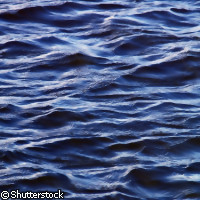Viruses major players in deep sea ecosystems
Viruses play a key role in the functioning of deep-sea ecosystems, according to EU-funded research published in the journal Nature on 28 August. The study reveals that viruses are the leading cause of death for micro-organisms living in the sediments of the deep sea floor. The nutrients released when these bacteria die are quickly taken up by other organisms. In this way, the viruses accelerate the flow of nutrients such as carbon and nitrogen through the ecosystem. The deep sea covers two thirds of the Earth's surface. Bacteria are the dominant life form in the sediments of the sea floor. 'There are 100 million to 100 billion bacteria per gram of sediment,' Professor Antonio Dell'Anno of the Polytechnic University of Marche in Italy, one of the authors of the paper, told CORDIS News. 'This adds up to a huge amount of carbon on the global scale.' In this study, scientists from France, Italy and the US collected over 200 samples of deep sea sediments from locations in the Atlantic and Pacific Oceans and the Mediterranean and Black Seas. Samples were taken at depths ranging from 165 metres to over 5,000 metres. Their aim was to study the interactions between bacteria and viruses in these hostile environments. The scientists found that viruses are responsible for almost all bacterial mortality in deep sea sediments, and that at depths beyond 1,000 metres viral mortality is close to 100%. The viruses effectively split the bacteria open, releasing their cell contents into the environment where the nutrients are quickly re-used by other, as yet uninfected, bacteria. Professor Dell'Anno describes the process as a kind of 'deep sea cannibalism' that effectively accelerates the carbon cycle. 'The carbon is recycled, and so are the other nutrients,' explained Professor Dell'Anno. The researchers estimate that this process 'shunts' 0.37 to 0.63 gigatonnes of carbon per year through the deep sea food web. 'Our results indicate that viruses have an important role in global biogeochemical cycles, in deep-sea metabolism and the overall functioning of the largest ecosystem of our biosphere,' the researchers conclude. The team is now keen to identify the viruses involved in these processes and investigate in detail the role they play in maintaining biodiversity in the deep-sea environment. The depths of the oceans also play an important role in the global carbon cycle. Currently, computer models of the carbon cycle do not take into account the actions of these viruses. Another challenge for the team is therefore to incorporate the activities of deep sea viruses into these models. Scientists have known for some time that viruses are responsible for high levels of mortality in the upper reaches of the ocean. However, until now there has been no comprehensive study of the situation in the depths of the oceans. Simply gathering sediment samples at these depths poses major technical challenges. Furthermore, samples must be kept and studied at the extreme pressures and low temperatures found at the bottom of the ocean, which requires highly specialised, expensive equipment. EU support for the research came from the HERMES ('Hotspot ecosystems research on the margins of European seas') project, which is funded under the 'Sustainable development, global change and ecosystems' Thematic area of the Sixth Framework Programme (FP6).



